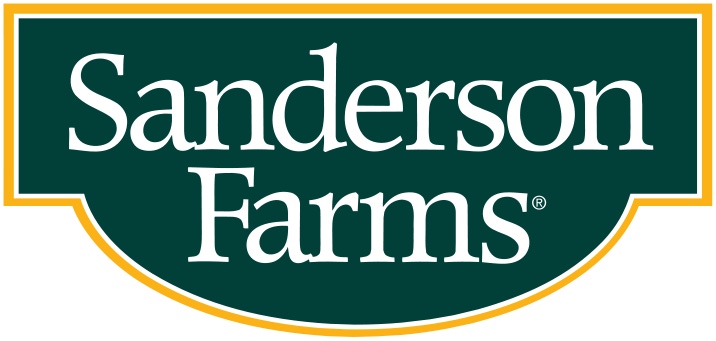Relatively high prices of competing proteins have shifted some consumer demand to chicken.
June 2, 2014

Sanderson Farms Inc. (NASDAQ: SAFM) reported results for its second fiscal quarter and six months ended April 30, 2014.
Net sales for the second quarter of fiscal 2014 were $660.7 million compared with $621.2 million for the same period a year ago. For the quarter, net income was $51.0 million, or $2.21 per share, compared with net income of $24.4 million, or $1.06 per share, for the second quarter of fiscal 2013.
Net sales for the first six months of fiscal 2014 were $1,245.6 million compared with $1,217.0 million for the same period of fiscal 2013. Net income for the first half of the year totaled $79.9 million, or $3.46 per share, compared with net income of $17.4 million, or $0.76 per share, for the first six months of last year.
"The results for our second quarter of fiscal 2014 reflect lower grain costs and continued favorable demand for poultry products," said Joe F. Sanderson Jr., chairman and chief executive officer of Sanderson Farms, Inc. "Our net sales were 6.4 percent higher compared with the second quarter of fiscal 2013, reflecting increased volume offset by slightly lower market prices. Demand for chicken remains strong from our retail grocery store customers, and it appears the relatively high prices of competing protein have shifted some consumer demand to chicken. In addition, while customer traffic through food service establishments remains challenged by macroeconomic factors, relatively high priced beef contributed to improving demand and market prices during the quarter for products produced at our food service plants.
"Our profitability for the second quarter continued to benefit from lower feed costs," added Sanderson. "Feed costs in flocks processed decreased 19.1 percent compared with last year's second fiscal quarter. Because of the tight supply of soybeans and the USDA's lower ending stock estimates for corn, market prices for grain have moved higher since our first quarter. We expect grain prices to remain volatile at least until markets get some visibility on the quantity and quality of this year's corn and soybean crops, as tight soy supplies and the lowered corn estimates place a premium on favorable growing conditions this summer."
According to Sanderson, market prices for poultry products were mixed during the second quarter of fiscal 2014 compared with the same quarter a year ago. The simple average of the Georgia dock price for whole chickens increased approximately 4.3 percent in the Company's second fiscal quarter compared with the same period in 2013, and moved to record high levels in April. Bulk leg quarter market prices were lower than during last year's second quarter, and reflect lower export demand. Average boneless breast meat prices during the second quarter were flat with the prior year period, but moved significantly higher in April. Jumbo wing prices were down 27.9 percent for the second quarter of 2014 compared with the same period last year. Prices paid for corn decreased 34.0 percent compared with the second quarter of fiscal 2013, while prices paid for soybean meal, the Company's second primary feed ingredient, increased 8.8 percent.
"We continue to make progress on our new facilities in Palestine, Texas," added Sanderson. "Construction is well under way at the feedmill, hatchery and processing plant sites, and we have sufficient interest from independent contract producers to provide housing for our flocks. Indeed, we will place our first pullet flock associated with the Palestine, Texas facility next month.
"Looking ahead, we are reasonably optimistic as we head into the summer months and what is typically the peak demand period for chicken. Total grain costs have moved higher but remain below last year's prices, and demand for chicken products is expected to remain strong. Weekly broiler egg sets continue to run slightly above last year's numbers, but breeder placements remain constrained. It appears the reduced size of the breeder flock will constrain production over the short term despite higher industry returns. While macroeconomic conditions continue to affect consumer behavior, market prices for boneless breast meat sold to our food service customers improved through April and May, and market prices for retail grocery store products have also moved higher. Regardless of market conditions, however, we will maintain our focus on maximizing our operating performance and sales execution," Sanderson concluded.

You May Also Like


